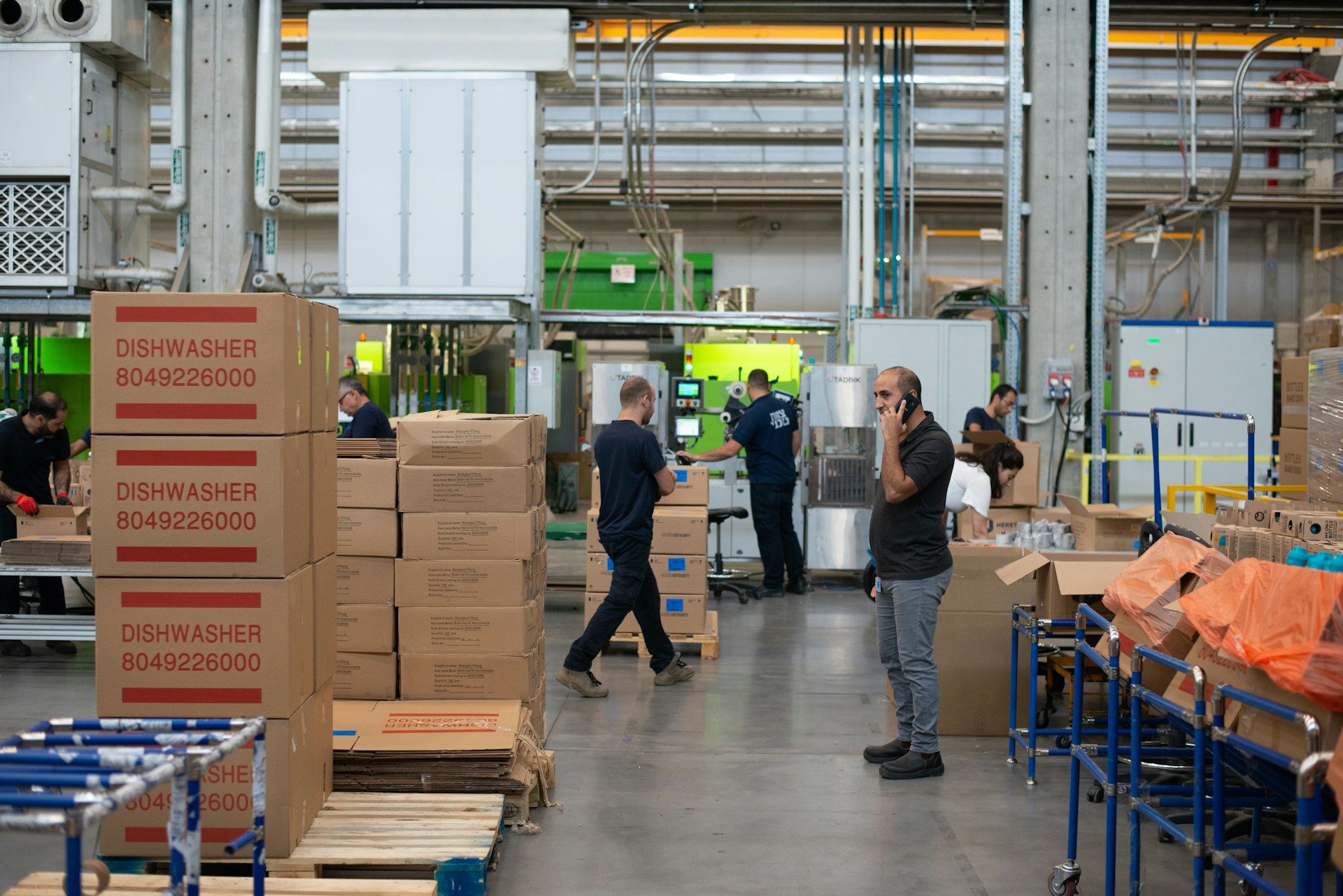Regulations in the produce packaging sector are continuously evolving, imposing new challenges for enterprises operating within this domain.
These changes primarily revolve around ensuring safety standards, intending to protect the final consumers.
Adapting effectively to these new norms can mean the difference between business success and failure.
Recognizing this dynamic environment, businesses are seeking efficient strategies to navigate through the shifting landscape.
A primary task is to ensure a seamless integration of these regulations into existing operational practices.
This not only bolsters business resilience but also enhances market reputation.
Strategies For Adapting To New Produce Packaging Safety Regulations
1. Regularly update team on new safety regulations
Adapting to new safety regulations in the field of produce packaging necessitates a comprehensive understanding of those regulations. Tailored trainings can assist in this by breaking down complex legislation into palatable measures.
To ensure the smooth implementation of regulations, it is imperative to keep the team updated on any changes in safety protocols in a timely manner. This act doesn’t only concern the higher authorities but spills over to every individual involved in the packaging process.
Companies must prioritize educating their employees about the necessity and benefits of updated safety regulations, thus emphasizing the importance of following them.
Implementing regular training sessions will keep the staff informed about the latest safety procedures, thus reducing the risk of non-compliance.
While it is vital to understand the new safety regulations, understanding the repercussions of non-compliance is just as important. This may include penalties such as fines or even stoppage of work.
Another excellent strategy is to provide a manual or handbook detailing the new regulations. This acts as a one-stop reference guide that employees can consult whenever they are unsure about a particular regulation.
Additionally, it would be beneficial to propose setting quarterly or half-yearly reviews to evaluate the effectiveness of these trainings and make necessary improvements.
Alongside, keep an open dialogue with the team, allowing them to ask questions or clarify doubts openly. This will foster a culture of safety, with everyone feeling responsible and vigilant about doing their part.
It may be beneficial to enlist the help of a designated safety officer who can act as a point of contact for any safety-related queries. The safety officer should be equipped to handle any concerns and facilitate the correct adoption of new regulations.
Furthermore, learning should not just be restricted to face-to-face trainings but should extend to an online platform which can be accessed at the convenience of the employees.
Consider involving the whole team in the thought process of safety measures can lead to the inception of innovative ideas that could potentially improve the way the regulations are implemented.
It is also critical to ensure that new hires are thoroughly briefed about the safety regulations before they begin, thus inseting these values from the start of their tenure.
With an updated team, organizations would be better equipped to handle any changes coming their way, maintaining compliance while ensuring safety in all processes.
Promoting a culture of safety and compliance within the workplace not only increases productivity, but also ensures that employees feel valued and care for their health and safety.
In the world of produce packaging, safety regulations are evolving consistently. Therefore, a vigilant, well informed team will ensure that done with utmost care and dedication.
2. Integrate New Regulations into Current Packaging Procedures
Integrating new safety regulations into current packaging procedures is a crucial step in fulfilling compliance requirements.
Typically, these new regulations arise from changes in the law or industry standards, necessitating the need for swift adaptation.
Firstly, it is important to maintain a comprehensive understanding of the existing packaging procedures.
This knowledge is pivotal in recognizing how the new regulations will impact the current processes.
Successful integration is synonymous with seamless transition, which could only be achieved through a comprehensive understanding of both the existing procedure and the proposed regulatory changes.
Therefore, the key personnel involved in packaging must be well-informed about the specific changes that the new regulations will introduce.
The next step involves risk assessment, which aids in identifying any potential challenges or pitfalls that could arise during the integration process.
Conducting a risk assessment will provide you with a clear roadmap on how to safely transition from old procedures to new regulations without disrupting production processes.
Once the risks are recognized and understood, the next step is to design and implement contingency plans to mitigate them.
Mitigating risks often involves retraining staff on new procedures, investing in new equipment, or modifying existing machinery to comply with the new regulations.
Whatever measures are taken, the goal is always to minimize production downtime and potential financial losses.
Subsequently, it is recommended that companies test these new procedures in a controlled environment before they are enacted on a larger scale.
Testing can identify any unforeseen complications or inefficiencies, allowing the company to refine the procedures prior to fully implementing them.
To ensure everlasting compliance, businesses should develop a system for regularly reviewing and updating their packaging procedures as new regulations come into effect.
Such a system supports the continuous improvement of packaging processes and guarantees that the business remains compliant at all times.
Essentially, integrating new regulations into current packaging procedures is a continuous process of learning, adaptation, and improvement which helps ensure the safety and legality of your product packaging.
3. Outsource compliance to trusted safety consultants.
With the rapidly evolving nature of produce packaging safety regulations, it may be beneficial to outsource compliance to trusted safety consultants.
These professionals specialize in keeping abreast of the latest changes and updates in safety standards, ensuring that your business remains compliant at all times.
They perform a vital role in navigating the complex regulatory landscapes, thereby mitigating the risk of penalties and reputational damage arising from non-compliance.
This strategy takes off your shoulders the burden of constantly monitoring and interpreting the ever-changing safety regulations alone.
In addition, safety consultants can provide you with an external perspective regarding your current packaging operations.
They can identify potential gaps and offer critical insights and solutions to enhance your compliance levels.
It’s important to choose consultants with proven expertise and reputation in your specific industry.
This ensures they have the necessary knowledge to guide you through the unique challenges faced by your packaging operations.
Furthermore, they can provide specialized training to your team, enhancing the overall safety culture within your organization.
Working with a safety consultant also allows you to utilize their extensive networks and resources.
This can entail access to advanced analysis tools, databases of regulations, and practical case studies, all of which can positively impact your safety program.
They also act as an effective buffer between your company and regulatory bodies, smoothing any potential issues or conflicts.
Lastly, outsourcing compliance to safety consultants allows you to focus on your core business operations while maintaining high safety standards.
This strategy can not only save you considerable time and resources but also provide peace of mind that your company is legally protected and adhering to the highest standards of safety in your industry.
Therefore, engaging trusted safety consultants can significantly strengthen your position in coping with the dynamics of new produce packaging safety regulations.
4. Invest in Safety Regulatory Compliance Technology
To successfully adapt to new produce packaging safety regulations, it is worth considering investing in safety regulatory compliance technology.
Such technology often encompasses tools and software that are specifically designed to help businesses comply with stringent regulatory standards.
By automating and streamlining complex compliance processes, these technologies can play a significant role in ensuring the increasing safety requirements for produce packaging are met without increase in workload.
The main aim of this investment is to render the process of adhering to new regulations more efficient, seamless, and less prone to human error.
Compliance software typically provides regular updates about changes in regulations, helping your team to stay abreast of any fresh requirements.
The convenience it offers is invaluable, as it automatizes the process of staying up-to-date with regulatory changes, reducing the risk of non-compliance.
It gives enterprises the ability to proactively respond to new rules, minimizing disruption to their ongoing operations.
By automating and streamlining complex compliance processes, these technologies can play a significant role in ensuring the increasing safety requirements for produce packaging are met without an increase in workload.
Regulatory compliance technology can also provide valuable insights and analytics to help businesses make informed decisions related to operational safety and risk management.
It can predict potential compliance issues before they emerge, giving businesses the opportunity to address these issues proactively.
Moreover, the use of such technology also communicates to consumers and regulators alike that your business is serious about upholding high safety standards.
This can enhance your brand’s reputation for safety in the market, which is especially important in the food industry, where consumer trust is paramount.
Additionally, investing in regulatory compliance technology is not just a reactive measure to adhere to new guidelines, but also a proactive step towards future-proofing your business.
With an increasing focus on regulation and safety in the global food supply chain, businesses that can adapt and comply swiftly are likely to have a competitive advantage in the long run.
Therefore, making the decision to invest in compliance technology now, could save you significant time, effort, and potential regulatory penalties in the future.
While the initial cost of investing in such technology may seem high, it’s important to view this as a strategic business investment that is likely to yield significant long-term benefits.
In conclusion, integrating safety regulatory compliance technology into your operations can be a crucial strategy for adapting to new produce packaging safety regulations, while enhancing your business’s operational efficiency and market standing.
5. Constantly Review and Adjust Safety Procedures
Ensuring a high level of safety compliance in produce packaging demands ongoing efforts and close attention to detail. This involves not only maintaining current protocols but also constantly reviewing and updating safety procedures.
One advantage of this regular monitoring approach is that it enables an organization to stay ahead of the curve and mitigate unexpected challenges. In essence, the ability to anticipate potential problems comes from proactively analyzing safety measures on a regular basis.
In addition, continuous revision mitigates the risk of procedure stagnation, which can+ lead to an increased risk of non-compliance. Therefore, the practice of regularly adjusting safety processes is paramount to the ongoing successful operation of a produce packaging facility.
Moreover, every adjustment made should be carried out carefully and with much consideration. Common drivers of these updates include changes in regulations, new scientific findings, and advances in technology.
Significant improvements in packaging technology often necessitate changes in safety procedures to ensure they are still relevant and effective. These adjustments are not simply about compliance but enhancing safety standards.
Also, it is vital that whenever changes to safety procedures are made, employees are appropriately educated. Organizations can leverage various platforms, including internal training programs, to communicate these changes extensively.
This approach to continuous review and adjustments encompasses various safety aspects, such as sanitation, safe handling of machines, and appropriate storage. It is about creating a dynamic and adaptable safety culture within the organization.
Regular audits of safety procedures are effective tools to facilitate this constant review process. Auditing creates an opportunity to closely scrutinize the safety measures in place, identify gaps, and make necessary adjustments.
The review and adjustment process also include varying packaging materials and processes as required by governing regulations. It necessitates maintaining an open mind towards exploring new materials and techniques that might improve safety standards.
Furthermore, the analyzed data from these reviews should be synthesized to craft new process frameworks. This not only enhances the safety measures but also keeps them aligned with the evolving regulatory environment.
Moreover, in the event of non-compliance in certain areas, a quick response and corrective actions should be initiated. This is where the benefit of continually reviewing safety procedures is most significantly felt.
Lastly, while the exact details of the process may change, the goal remains constant: to constantly maintain and increase the safety level. Ultimately, the commitment to review and adjust safety procedures must become a core value that is deeply ingrained into the organization’s culture.
Always remember that commitment to safety isn’t merely about adherence to rules and regulations, but also about ensuring the well-being of employees and maintaining consumers’ trust in the organization.
The Bottom Line
The value of ongoing diligence with regard to safety regulations cannot be overstated.
Ensuring the team is always kept informed of these changes, integrating these amendments into current packaging procedures and enlisting the help of trusted safety consultants, as and when required, are key strategies for maintaining compliance.
Investing in safety regulatory compliance technology is an essential move for furthering this goal.
The process, however, does not stop here.
Regular reviews and adjustments to safety procedures are instrumental in keeping pace with evolving industry standards.
These practices, collectively, contribute to creating a safer, more compliant workspace that is of immense benefit to all stakeholders involved.




